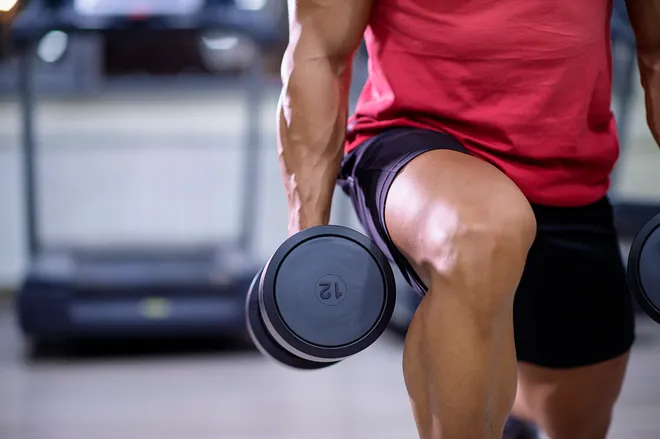Social media is giving men ‘bigorexia,' or muscle dysmorphia. We need to talk about it.
The buff body look is back, thanks to TikTok and other social media sites. But it's bringing with it an unfortunate mental health consequence for men and teenage boys.
It's called "bigorexia," or muscle dysmorphia, and it's warping the way men see themselves as well as their self-esteem around their bodies. The ramifications of it can include depression, anxiety, social isolation, over-exercising and steroid abuse.
Though it's not anything new, the problem has been made worse by social media.
"It used to be you would go and watch a movie and there would be a big action star or something along those lines. Then you would go and hang out the rest of the day with people who had normal bodies," says Joseph Trunzo, a licensed clinical psychologist and a psychology professor at Bryant University. "But now we've got these little things that we carry around with us all day, every day, constantly feeding us messages and images about what we're supposed to look like. ... You can very quickly develop a distortion for what a healthy normal body is."

What is 'bigorexia,' or muscle dysmorphia?
Neither of these terms are clinical diagnoses, but they've emerged in our cultural lexicon to describe the particular kind of body image issues teenage boys and men are up against.
Though men, like women, have always had a cultural pressure to look a certain way, Trunzo says the problem has become even worse due to social media. Apps like TikTok and Instagram, he says, often create a vicious cycle, in which men chase a physique that's unattainable to the vast majority of the population.
In the rare instances in which a man does achieve this physique, he receives likes and validation, driving him further into a likely unhealthy lifestyle.
Teenagers, Trunzo says, are especially susceptible to this pattern.
"Adolescence is a time when we're trying on a lot of different identities," he says. "So we're very vulnerable, especially at that time of life, to messaging and images that we receive about how we're supposed to look."
The buff body type is back in style.On social media, teens find inspiration, dangerous trends
Trunzo encourages men and teenage boys to remember that, while exercise is essential for a healthy body and mind, it is possible to overdo it. He also reminds them that most of the ripped guys they see on social media and in movies have a team of professionals working behind-the-scenes to help them achieve and maintain their physiques.
He also wants parents to become more aware of the images and messages their children are exposed to on their phones.
Why are buff bodies back in style?
Being toned doesn't seem to be enough anymore; it’s about being ripped.
“For many, fitness today definitely seems to be about the social media and all about vanity,” Jason Kozma, a former Mr. America who owns High Performance Personal Training in Los Angeles, previously told USA TODAY.
The pandemic played a role in furthering this trend as well, giving many teens a focus at a time when it would be easy to drift into depression, Barbara Brehm-Curtis, a professor of exercise and sports studies at Smith College, previously told USA TODAY.
“The isolation during COVID-19 clearly has led many kids to training and hopefully, that has led to other good habits,” she said. “But there are definitely things you want to watch out for, whether you’re a teen getting into lifting or their parents.”
Lizzo criticized body positivity.Here's what you need to know about body neutrality.
Jonathan Purtell, a registered dietician, previously told USA TODAY he's glad kids see fitness as something worth pursuing, for both its physical and psychological benefits. But he urges teens and parents alike to be wary of the potentially corrosive effects of coupling a gym passion with a social media obsession.
“At a click of a button, kids today can see someone they want to be, and while that can be inspiring we often don’t see what it took for that person to get that body, all the work and dedication,” he said. “That can put pressure on teens who think they need to be there, now. But it’s a process and involves proper sleep, nutrition and gym techniques. Like anything, the more you put into it, the more you’ll get out.”
'We're all overcompensating':Why so many LGBTQ community members struggle with body dysmorphia
Contributing: Marco della Cava
Disclaimer: The copyright of this article belongs to the original author. Reposting this article is solely for the purpose of information dissemination and does not constitute any investment advice. If there is any infringement, please contact us immediately. We will make corrections or deletions as necessary. Thank you.







